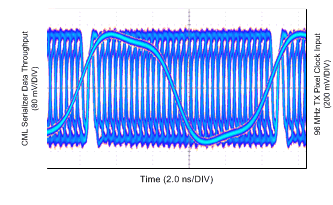ZHCSEV0 March 2016 DS90UB921-Q1
PRODUCTION DATA.
- 1 特性
- 2 應用
- 3 說明
- 4 修訂歷史記錄
- 5 Pin Configuration and Functions
-
6 Specifications
- 6.1 Absolute Maximum Ratings
- 6.2 ESD Ratings - JEDEC
- 6.3 ESD Ratings—IEC and ISO
- 6.4 Recommended Operating Conditions
- 6.5 Thermal Information
- 6.6 DC Electrical Characteristics
- 6.7 AC Electrical Characteristics
- 6.8 PCLK Timing Requirements
- 6.9 Recommended Timing for the Serial Control Bus
- 6.10 Switching Characteristics
- 6.11 Typical Charateristics
-
7 Detailed Description
- 7.1 Overview
- 7.2 Functional Block Diagram
- 7.3
Feature Description
- 7.3.1 High Speed Forward Channel Data Transfer
- 7.3.2 Low Speed Back Channel Data Transfer
- 7.3.3 Common Mode Filter Pin (CMF)
- 7.3.4 Video Control Signal Filter
- 7.3.5 EMI Reduction Features
- 7.3.6 LVCMOS VDDIO Option
- 7.3.7 Power Down (PDB)
- 7.3.8 Remote Auto Power-Down Mode
- 7.3.9 Input PCLK Loss Detect
- 7.3.10 Serial Link Fault Detect
- 7.3.11 Pixel Clock Edge Select (TRFB)
- 7.3.12 Frequency Mode Optimizations
- 7.3.13 Interrupt Pins - Funtional Description and Usage (INTB, REM_INTB)
- 7.3.14 Internal Pattern Generation
- 7.3.15 GPIO[3:0] and GPO_REG[7:4]
- 7.3.16 I2S Transmitting
- 7.3.17 Built In Self Test (BIST)
- 7.4 Device Functional Modes
- 7.5 Programming
- 7.6 Register Maps
- 8 Application and Implementation
- 9 Power Supply Recommendations
- 10Layout
- 11器件和文檔支持
- 12機械、封裝和可訂購信息
6 Specifications
6.1 Absolute Maximum Ratings
over operating free-air temperature range (unless otherwise noted)(1)(2)| MIN | MAX | UNIT | ||
|---|---|---|---|---|
| Supply voltage – VDD33 | –0.3 | 4 | V | |
| Supply voltage – VDDIO | –0.3 | 4 | V | |
| LVCMOS I/O voltage | –0.3 | VDDIO + 0.3 | V | |
| Serializer output voltage - DOUT± | –0.3 | 2.75 | V | |
| Junction temperature | 150 | °C | ||
| Storage temperature, Tstg | –65 | 150 | °C | |
(1) Stresses beyond those listed under Absolute Maximum Ratings may cause permanent damage to the device. These are stress ratings only, which do not imply functional operation of the device at these or any other conditions beyond those indicated under Recommended Operating Conditions. Exposure to absolute-maximum-rated conditions for extended periods may affect device reliability.
(2) If Military/Aerospace specified devices are required, please contact the Texas Instruments Sales Office/ Distributors for availability and specifications.
6.2 ESD Ratings - JEDEC
| VALUE | UNIT | |||
|---|---|---|---|---|
| V(ESD) | Electrostatic discharge | Human-body model (HBM), per AEC Q100-002(1) | ±8000 | V |
| Charged-device model (CDM), per AEC Q100-011 | ±1500 | |||
(1) AEC Q100-002 indicates that HBM stressing shall be in accordance with the ANSI/ESDA/JEDEC JS-001 specification.
6.3 ESD Ratings—IEC and ISO
| VALUE | UNIT | ||||
|---|---|---|---|---|---|
| V(ESD) | Electrostatic discharge | RD = 330 Ω, CS = 150 pF | IEC, powered-up only contact discharge (DOUT+, DOUT-) | ±8000 | V |
| IEC, powered-up only air-gap discharge (DOUT+, DOUT-) | ±18000 | ||||
| RD = 330 Ω, CS = 150 and 330 pF | ISO10605 contact discharge (DOUT+, DOUT-) | ±8000 | V | ||
| ISO10605 air-gap discharge (DOUT+, DOUT-) | ±18000 | ||||
| RD = 2 kΩ, CS = 150 and 330 pF | ISO10605 contact discharge (DOUT+, DOUT-) | ±8000 | V | ||
| ISO10605 air-gap discharge (DOUT+, DOUT-) | ±18000 | ||||
6.4 Recommended Operating Conditions
| MIN | NOM | MAX | UNIT | |
|---|---|---|---|---|
| Supply voltage (VDD33) | 3 | 3.3 | 3.6 | V |
| LVCMOS supply voltage (VDDIO) | 3 | 3.3 | 3.6 | V |
| 1.71 | 1.8 | 1.89 | V | |
| Operating free-air temperature (TA) | −40 | 25 | 105 | °C |
| PCLK frequency, Coax operation, high frequency mode(1) | 48 | 96 | MHz | |
| PCLK frequency, Coax operation, intermediate frequency mode(1) | 24 | 48 | MHz | |
| PCLK frequency, Coax operation, low frequency mode(1) | 15 | 24 | MHz | |
| PCLK frequency, STP operation, high frequency mode(1) | 15 | 96 | MHz | |
| PCLK frequency, STP operation, low frequency mode(1) | 5 | 15 | MHz | |
| Supply noise -- (DC-50MHz) | 100 | mVP-P |
(1) For configuration of cable type and frequency mode, refer to Frequency Mode Optimizations.
6.5 Thermal Information
| THERMAL METRIC(1) | DS90UB921-Q1 | UNIT | |
|---|---|---|---|
| RHS (WQFN) | |||
| 48 PINS | |||
| RθJA | Junction-to-ambient thermal resistance | 29 | °C/W |
| RθJC(top) | Junction-to-case (top) thermal resistance | 11.7 | |
| RθJB | Junction-to-board thermal resistance | 5.0 | |
| ψJT | Junction-to-top characterization parameter | 0.1 | |
| ψJB | Junction-to-board characterization parameter | 6.0 | |
| RθJC(bot) | Junction-to-case (bottom) thermal resistance | 1.7 | |
(1) For more information about traditional and new thermal metrics, see the IC Package Thermal Metrics application report, SPRA953.
6.6 DC Electrical Characteristics
over operating free-air temperature range (unless otherwise noted)(1)(2)(3)| PARAMETER | TEST CONDITIONS | PIN/FREQ. | MIN | TYP | MAX | UNIT | ||
|---|---|---|---|---|---|---|---|---|
| LVCMOS I/O DC SPECIFICATIONS | ||||||||
| VIH | High-level input voltage | VDDIO = 3 V to 3.6 V | PDB | 2 | VDDIO | V | ||
| VIL | Low-level input voltage | VDDIO = 3 V to 3.6 V | GND | 0.8 | V | |||
| IIN | Input current | VIN = 0 V or VIN = VDDIO (3 V to 3.6 V) |
–10 | ±1 | 10 | µA | ||
| VIH | High-level input voltage | VDDIO = 3 V to 3.6 V | DIN[23:0], HS, VS, DE, PCLK, I2S_CLK, I2S_WC, I2S_DA | 2 | VDDIO | V | ||
| VDDIO = 1.71 V to 1.89 V | 0.65 × VDDIO | VDDIO | V | |||||
| VIL | Low-level input voltage | VDDIO = 3 V to 3.6 V | GND | 0.8 | V | |||
| VDDIO = 1.71 V to 1.89 V | GND | 0.35 × VDDIO | V | |||||
| IIN | Input current | VIN = 0 V or VIN = VDDIO |
VDDIO = 3 V to 3.6 V | –10 | ±1 | 10 | µA | |
| VDDIO = 1.71 V to 1.89 V | –10 | ±1 | 10 | µA | ||||
| VOH | High-level output voltage | IOH = –4 mA | VDDIO = 3 V to 3.6 V | GPIO[3:0], GPO_REG[7:4], REM_INTB | 2.4 | VDDIO | V | |
| VDDIO = 1.71 V to 1.89 V | VDDIO – 0.45 | VDDIO | V | |||||
| VOL | Low-level output voltage | IOH = 4 mA | VDDIO = 3 V to 3.6 V | GND | 0.4 | V | ||
| VDDIO = 1.71 V to 1.89 V | GND | 0.35 | V | |||||
| IOS | Output short-circuit current | VOUT = 0 V | –50 | mA | ||||
| IOZ | TRI-STATE output current | VOUT = 0 V or VOUT = VDDIO PDB = L |
–10 | 10 | µA | |||
| FPD-LINK III CML DRIVER DC SPECIFICATIONS | ||||||||
| VOD | Differential output voltage (DOUT+) – (DOUT–) | RL = 100 Ω, see Figure 1 | DOUT± | 700 | 800 | 1000 | mVp-p | |
| VOUT | Single-ended output voltage (DOUT+ or DOUT-) | RL = 50 Ω See Figure 2 |
350 | 400 | 500 | mV | ||
| ΔVOD | Output voltage unbalance | 1 | 50 | mV | ||||
| VOS | Offset voltage — single-ended | RL = 100 Ω See Figure 1 |
2.5 – 0.5 × VOD | V | ||||
| ΔVOS | Offset voltage unbalanced single-ended | 1 | 50 | mV | ||||
| IOS | Output short-circuit current | DOUT± = 0 V, PDB = L or H | –38 | mA | ||||
| RT | Internal termination resistor — single-ended | 40 | 50 | 62 | Ω | |||
| SERIAL CONTROL BUS | ||||||||
| VIH | Input high level, I2C | SDA, SCL | 0.7 × VDD33 | VDD33 | V | |||
| VIL | Input low-level voltage, I2C | 0.3 × VDD33 | V | |||||
| VHY | Input hysteresis, I2C | > 50 | mV | |||||
| VOL | Output Low Level, I2C | IOL = +1.25mA | 0 | 0.36 | V | |||
| IIN | Input Current, I2C | VIN = 0V or VIN = VDD33 |
–10 | 10 | µA | |||
| CIN | Input capacitance, I2C | < 5 | pF | |||||
| SUPPLY CURRENT | ||||||||
| IDD1 | Supply Current (includes load current) RL = 100Ω, f = 96MHz |
Checker Board Pattern, See Figure 3 |
VDD33 = 3.6V | 148 | 180 | mA | ||
| IDDIO1 | VDDIO = 3.6V | 90 | 180 | μA | ||||
| VDDIO = 1.89V | 1 | 3 | mA | |||||
| IDDS1 | Supply Current Remote Auto Power Down Mode | 0x01[7] = 1, deserializer is powered down | VDD33 = 3.6V | 1.2 | 3 | mA | ||
| IDDIOS1 | VDDIO = 3.6V | 65 | 200 | μA | ||||
| VDDIO = 1.89V | 55 | 200 | μA | |||||
| IDDS2 | Supply Current Power Down | PDB = L, All LVCMOS inputs are not connected (NC) or tied to GND | VDD33 = 3.6V | 1 | 3 | mA | ||
| IDDIOS2 | VDDIO = 3.6V | 65 | 200 | μA | ||||
| VDDIO = 1.89V | 55 | 200 | μA | |||||
| IDDS3 | Supply Current Sleep State | 0x01[7] = 1, PCLK is removed. | VDD33 = 3.6V | 55 | mA | |||
| IDDIOS3 | VDDIO = 3.6V | 80 | μA | |||||
| VDDIO = 1.89V | 1 | mA | ||||||
(1) The Electrical Characteristics tables list ensured specifications under the listed Recommended Operating Conditions except as otherwise modified or specified by the Electrical Characteristics conditions and/or Notes. Typical specifications are estimations only and are not ensured.
(2) Typical values represent most likely parametric norms at nominal conditions at the time of product characterization and are not ensured.
(3) Current into device pins is defined as positive. Current out of a device pin is defined as negative. Voltages are referenced to ground except VOD and ΔVOD, which are differential voltages.
6.7 AC Electrical Characteristics
over operating free-air temperature range (unless otherwise noted)(1)(2)(3)| PARAMETER | TEST CONDITIONS | PIN/FREQUENCY | MIN | TYP | MAX | UNIT | |
|---|---|---|---|---|---|---|---|
| GPIO BIT RATE | |||||||
| BRF | Forward channel bit rate | See(4) | ƒ = 5 – 96 MHz GPIO[3:0] |
0.25 × ƒ | Mbps | ||
| BRB | Back channel bit rate | STP cable - HFMODE | GPIO[3:0] | 60 | kbps | ||
| STP cable - LFMODE Coax cable - HFMODE, IFMODE, or LFMODE |
40 | kbps | |||||
(1) The Electrical Characteristics tables list ensured specifications under the listed Recommended Operating Conditions except as otherwise modified or specified by the Electrical Characteristics conditions and/or Notes. Typical specifications are estimations only and are not ensured.
(2) Typical values represent most likely parametric norms at nominal conditions at the time of product characterization and are not ensured.
(3) Current into device pins is defined as positive. Current out of a device pin is defined as negative. Voltages are referenced to ground except VOD and ΔVOD, which are differential voltages.
(4) Specification is ensured by design and is not tested in production.
6.8 PCLK Timing Requirements
over operating free-air temperature range (unless otherwise noted)(1)(2)(3)| MIN | NOM | MAX | UNIT | ||
|---|---|---|---|---|---|
| tTCP | PCLK period with STP cable, see(1)
ƒ = 5 to 96 MHz |
10.41 | T | 200 | ns |
| PCLK period with Coax cable, see(1)
ƒ = 15 to 96 MHz |
10.41 | T | 66.7 | ns | |
| tCIH | PCLK input high time; pin/frequency: PCLK | 0.4*T | 0.5*T | 0.6*T | ns |
| tCIL | PCLK input low time; pin/frequency: PCLK | 0.4*T | 0.5*T | 0.6*T | ns |
| tCLKT | PCLK input transition time(1), see Figure 4; ƒ = 5 MHz | 4 | ns | ||
| PCLK input transition time(1), see Figure 4; ƒ = 96 MHz | 0.5 | ns | |||
| tIJIT | PCLK input jitter, bit error rate ≤ 10–10
ƒ / 40 < jitter freq < ƒ / 20 ƒ = 5 to 78 MHz (1)(2) Paired with DS90UB926Q-Q1 |
0.35 | UI | ||
| PCLK input jitter, bit error rate ≤ 10–10
ƒ / 40 < jitter freq < ƒ / 20 f = 5 - 85MHz (1)(2) Paired with DS90UB928Q-Q1 |
0.35 | UI | |||
| PCLK input jitter, bit error rate ≤ 10–10
ƒ / 40 < jitter freq < ƒ / 20 f = 25 - 96MHz (1)(2) Paired with DS90UB940-Q1, or DS90UB948-Q1 |
0.35 | UI | |||
(1) Specification is ensured by characterization and is not tested in production.
(2) UI – Unit Interval is equivalent to one serialized data bit width (1UI = 1 / 35 × PCLK). The UI scales with PCLK frequency.
6.9 Recommended Timing for the Serial Control Bus
Over 3.3-V supply and temperature ranges unless otherwise specified.| MIN | TYP | MAX | UNIT | |||
|---|---|---|---|---|---|---|
| ƒSCL | SCL clock frequency | Standard mode | 0 | 100 | kHz | |
| Fast mode | 0 | 400 | kHz | |||
| tLOW | SCL low period | Standard mode | 4.7 | µs | ||
| Fast mode | 1.3 | µs | ||||
| tHIGH | SCL high period | Standard mode | 4 | µs | ||
| Fast mode | 0.6 | µs | ||||
| tHD;STA | Hold time for a start or a repeated start condition, see Figure 10 |
Standard mode | 4 | µs | ||
| Fast mode | 0.6 | µs | ||||
| tSU:STA | Set-up time for a start or a repeated start condition, see Figure 10 |
Standard mode | 4.7 | µs | ||
| Fast mode | 0.6 | µs | ||||
| tHD;DAT | Data hold time, see Figure 10 | Standard mode | 0 | 0.615 | 3.45 | µs |
| Fast mode | 0 | 0.615 | 0.9 | µs | ||
| tSU;DAT | Data set-up time, see Figure 10 | Standard mode | 250 | 0.56 | ns | |
| Fast mode | 100 | 0.56 | ns | |||
| tSU;STO | Set-up time for STOP condition, See Figure 10 |
Standard mode | 4 | µs | ||
| Fast mode | 0.6 | µs | ||||
| tBUF | Bus free time between STOP and START, SeeFigure 10 |
Standard mode | 4.7 | µs | ||
| Fast mode | 1.3 | µs | ||||
| tr | SCL and SDA rise time, See Figure 10 |
Standard mode | 430 | 1000 | ns | |
| Fast mode | 200 | 300 | ns | |||
| tf | SCL and SDA fall time, See Figure 10 |
Standard mode | 20 | 300 | ns | |
| Fast mode | 20 | 300 | ns | |||
| tsp | Input filter | 50 | ns | |||
 Figure 1. Serializer Differential VOD DC Output
Figure 1. Serializer Differential VOD DC Output
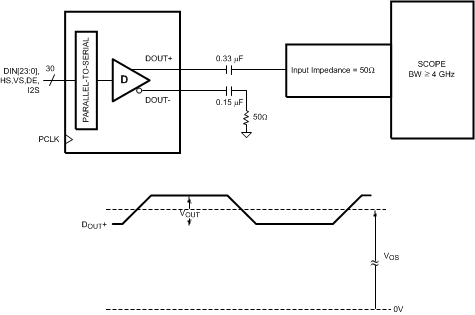 Figure 2. Serializer Single-ended VOUT DC Output
Figure 2. Serializer Single-ended VOUT DC Output
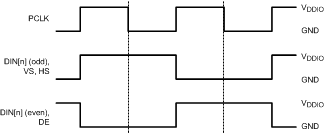 Figure 3. Checker Board Data Pattern
Figure 3. Checker Board Data Pattern
 Figure 4. Serializer Input Clock Transition Time
Figure 4. Serializer Input Clock Transition Time
 Figure 5. Serializer CML Output Load and Transition Time
Figure 5. Serializer CML Output Load and Transition Time
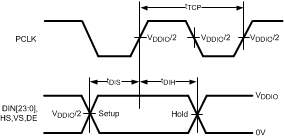 Figure 6. Serializer Setup and Hold Times
Figure 6. Serializer Setup and Hold Times
 Figure 7. Serializer Lock Time
Figure 7. Serializer Lock Time
 Figure 8. Serializer Delay Time
Figure 8. Serializer Delay Time
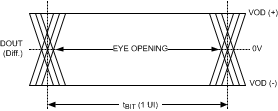 Figure 9. Serializer CML Output Jitter
Figure 9. Serializer CML Output Jitter
 Figure 10. Serial Control Bus Timing Diagram
Figure 10. Serial Control Bus Timing Diagram
6.10 Switching Characteristics
over operating free-air temperature range (unless otherwise noted)| PARAMETER | TEST CONDITIONS | PIN/FREQ. | MIN | TYP | MAX | UNIT | |
|---|---|---|---|---|---|---|---|
| tLHT | CML Output Low-to-High Transition Time | See Figure 5 | DOUT+, DOUT- | 80 | ps | ||
| tHLT | CML Output High-to-Low Transition Time | 80 | ps | ||||
| tDIS | Data Input Setup to PCLK | See Figure 6 | R[7:0], G[7:0], B[7:0], HS, VS, DE, PCLK | 2.0 | ns | ||
| tDIH | Data Input Hold from PCLK | 2.0 | ns | ||||
| tPLD | Serializer PLL Lock Time | See Figure 7 (1) | f = 5 - 96MHz | 131*T | ns | ||
| tSD | Delay — Latency | See Figure 8 | f = 5 - 96MHz | 145*T | ns | ||
| tTJIT | Output Total Intrinsic Jitter, Jitter frequency > f/10 Bit Error Rate ≥10-10 (2) (3) |
RL = 100Ω f = 96MHz See Figure 9 |
DOUT+, DOUT- | 0.25 | 0.30 | UI | |
(1) tPLD is the time required by the device to obtain lock when exiting power-down state with an active PCLK
(2) Specification is ensured by characterization and is not tested in production.
(3) UI – Unit Interval is equivalent to one serialized data bit width 1UI = 1 / (35*PCLK). The UI scales with PCLK frequency.
6.11 Typical Charateristics

Note: On the rising edge of each clock period, the CML driver outputs a low Stop bit, high Start bit, and 33 DC-scrambled data bits.
Figure 11. Serializer CML Driver Output with 96 MHz TX Pixel Clock
